Rice is a food so ingrained into our diets and lives that we often don’t even think about it.
As It’s virtually everywhere. Risotto, stir-fries, and even the family-friendly Rice A Roni brand are some good, basic examples, but you’ll also find paellas, Sushi, and even rice in burritos in some places.
Let’s face it – just about everybody loves a little rice!
Understandably, making perfect rice with very little effort has been in demand for long enough that rice cookers arose and some of the higher-end models can really do some fantastic things in your kitchen.
Today, we’re going to take a close look and tell you how they work, what separates the ‘fancy models’ from your standard rice cookers, and popular types of cookers, and we’ll even give you some tips on selecting the model that best fits your own personal needs.
We’ve got out instant pots, pressure cookers, air fryers, and more. Here’s more about rice cookers, another kitchen essential.
How do rice cookers work? Read on and we’ll tell you all about it!
Rice Cookers 101 – The basics of how it’s done
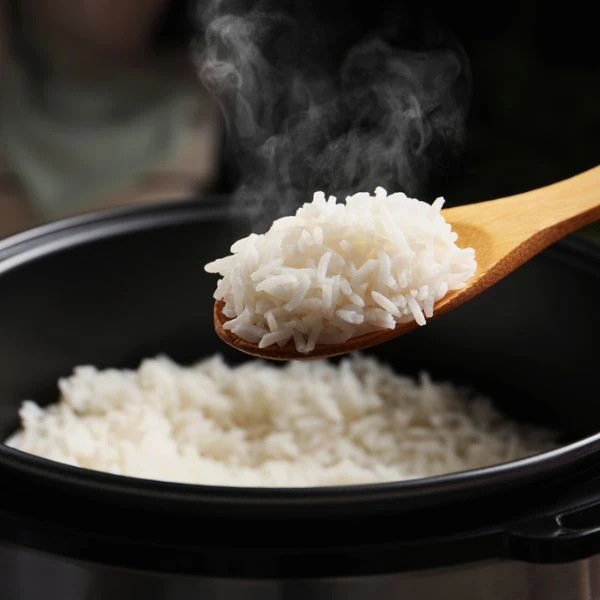
To explain how your rice cooker works, we’re going to break things down by going with the most basic of rice cooker models. Rice cookers typically consist of the following basic components (and we’ll go into different types later, this is just to get you started):
- The main body of the cooker
- A heating plate at the base
- Thermometer/thermal sensors
- An inner pan for housing the rice and easy cleanup afterward
Okay, so now you have a basic idea of the components, now let’s go through an overview of the cooking process step-by-step:
- The inner pot is first loaded with your rinsed or dry rice, and the measured amount of water is added.
- Depending on the model, you either hit the ‘cook’ button or the weight of the rice, and water triggers the heating element to activate, and it begins to heat up.
- The thermal sensors help the cooker to achieve a quick boil, with a target temperature of 212 degrees Fahrenheit. This heat is maintained until the water is sufficiently absorbed into the rice to generate steam. When this happens, the carefully maintained 212-degree temperature begins to rise, and this is registered by the thermal sensors.
- The thermal sensors lower the heat to ‘warm’, and the steam is what actually cooks your rice. Provided that there is enough water, the carefully controlled environment that is your rice cooker will typically produce perfectly-cooked rice every time.
Is this considerably faster than cooking rice in a pot?
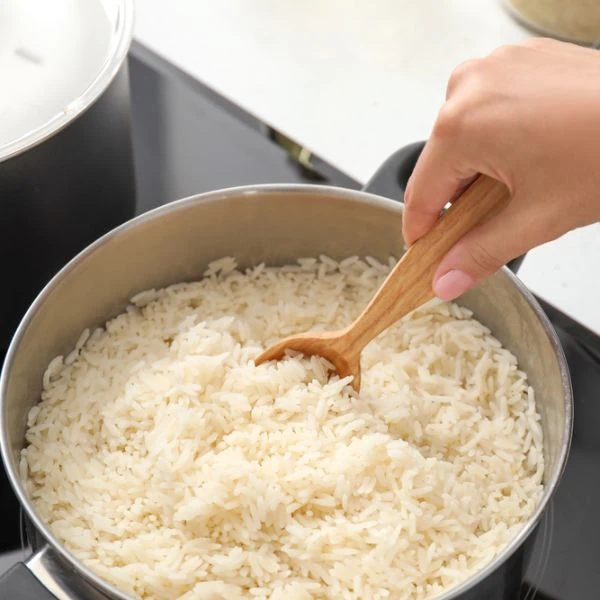
Actually, no – it takes a little longer but the appliance is doing all of the ‘heavy lifting’.
You simply load it with the rice, water, and anything else you wish to add to enhance flavors (more on this later) and let it work its magic and your rice cook. Cooking times by cups of white rice look something like this:
- 1 cup – 15 minutes
- 2 cups – 20 up to 25 minutes
- 3 cups – 30 to 35 minutes
…and so on, with an average of 10 minutes per cup of rice. Depending on the type of rice, you may have to cook it longer, but this gives you a general idea of the process.
Now, that’s just how a basic rice cooker works, but there are upgraded models that will add extra settings and while this is nice, a lot of times what you are getting are essentially buttons that initiate a pre-timed cook based on the rice type and volume.
Then there are the ‘Smart’ rice cookers – which take things to a whole new level – so let’s take a look at the difference there so that you can see why the price difference can be so pronounced between models.
Fuzzy logic – Driving Artificial Intelligence and high-end rice cookers
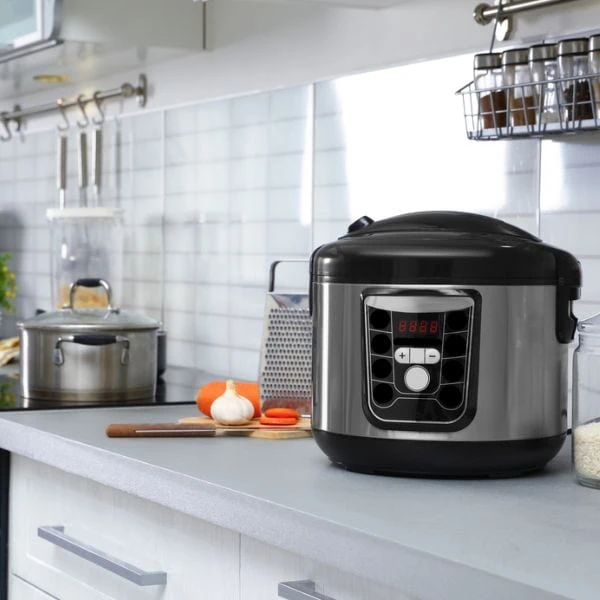
Fuzzy logic has been incorporated into some of the fancier rice cookers and it’s a wonderful thing. Rather than relying on presets, a computer chip inside of these cookers is able to react directly to all kinds of variables going on inside the inner pot.
While there’s a lot to ‘fuzzy logic’, a good way to describe it would be the ability to ask a lot of questions to determine what something is or isn’t, that can be applied to practical tasks – in this case, rice cooking.
For instance, all brown rice is rice, but not all rice is brown. A smart cooker will know that brown rice, once identified, needs to be cooked at a lower temperature than, let’s say, basmati rice or wild rice. Cooking brown rice will differ a little.
Not only that, but it also knows that it may or may not have enough water for a perfect cook, but using its sensors to ‘watch’ the rice as it cooks, it is going to adjust the heat as needed in an attempt to work with exactly what it has.
The end result is that your smart rice cooker, even armed with less water than it should have, will produce perfectly cooked rice anyway – with the exception that you might get some browned or lightly scorched at the bottom, but only if you erred quite a lot with the water amount.
Fuzzy logic basically enables rice cookers to go through a quick series of micro-calculations to determine exactly what type of rice is being cooked and how best to cook it with what you have provided. By contrast, a rice cooker that doesn’t have Fuzzy logic capabilities will simply heat the water to boiling, reduce the heat, and ‘hope for the best’ with the resulting steam.
It sounds simple when we put it that way, but when applied, it means you can make risotto and Cantonese Fan Choy in the same cooker, and they’ll come out consistently perfect just about every time.
Enjoy fluffy rice every time!
What can you cook with rice cookers?
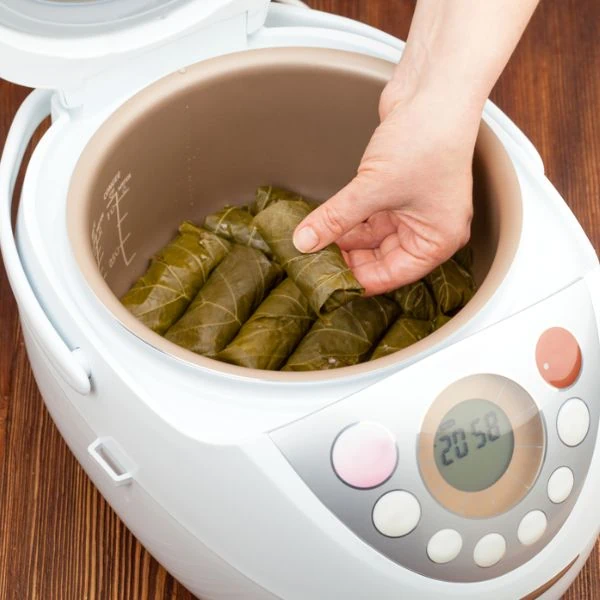
Rice cookers are designed to cook all kinds of rice, although other grains such as quinoa or barley can also be cooked to perfection in your rice cooker.
Those are just the ‘official’ uses, however. As any kitchen enthusiast knows, you can ‘hack’ all kinds of other cooking applications if you are willing to ‘dare to dream’ a little and your rice cooker will not disappoint.
For instance, you can use biscuit dough and garlic butter to make some yummy garlic bread in your rice cooker, or stuff that same dough with some pepperoni and cheese, seal it, and make some homemade pizza rolls that your friends will start visiting suspiciously often to enjoy at your place.
Don’t be afraid to have a little fun with your rice cooker, whether it’s a fancy model or not. You can whip up thick and amazing fruit-filled pancakes and all kinds of other foods and it’s kind of a fun way to pass the time when you are bored.
When in doubt, just use a pre-timed cook option or find a recipe that specifically goes with your type of cooker – it’s well worth experimenting with and sometimes the results are nothing short of amazing.
Speaking of types, let’s segue smoothly into the types of rice cookers to give you a better idea of that big, ol’ looming market that awaits when you go shopping for a rice cooker.
We’ll go over what the different models consist of offer without overly complicating it so that you aren’t overwhelmed when it comes to picking out the perfect rice cooker for your intentions and needs.
Popular types of rice cookers and how they work
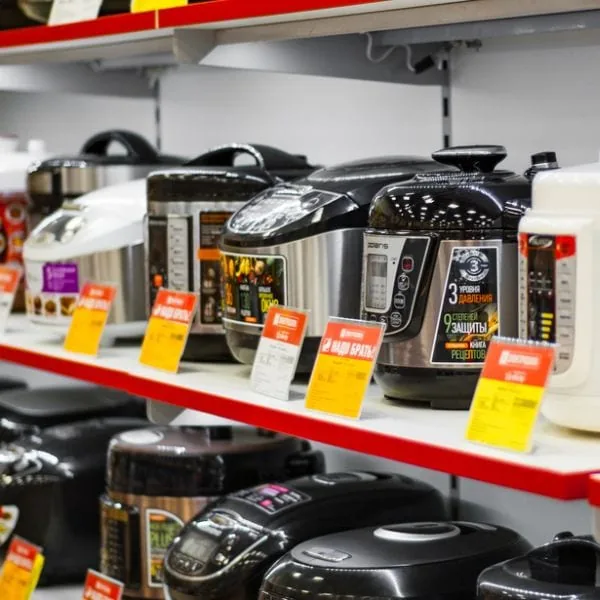
When an appliance is popular, naturally companies will start adding ‘bells and whistles’ in an attempt to get you to choose theirs, and this is where things get fun. Competition makes things interesting and with that in mind, we’ll look at some types of rice cookers that you’ll see on the shelves or in your favorite internet ‘cooking nooks’.
That way, you’ll be able to better recognize them when you see them and have a pretty good idea of what you’re actually going to get when you open the box and take your new rice cooker for a ‘test drive’.
Standard and “Improved” basic models
A ‘standard’ rice cooker, at its most basic, is kind of like a covered bucket that fits into the main appliance and comes with a ‘cook’ button, and maybe a ‘warm’ setting to keep the rice hot and ready for many hours after you’ve cooked it.
These models aren’t fancy but provided that you measure out your water properly, you’ll get a perfect batch of rice just about every time.
Multi-function rice cookers
Multi-function electric rice cookers let you choose from certain presets so that you can not only select the type of rice (brown, basmati, white) for a perfect pre-timed and heat-measured cook, but also other foods such as pasta, porridges, soups, and steamed veggies – just to give you a few examples.
This is a popular option, as they are fairly inexpensive and cook a wide range of items to make life much easier for their owners.
Digital rice cookers
Digital rice cookers up the game by letting you go with presets, or set your own custom times and temperature settings. This just gives you more granular control and if you are a veteran or a ‘mad scientist’ style cook, then you have quite an extended range of applications with your rice cooker.
Induction cookers
Induction rice cookers incorporate induction burner technology into your rice cooker to increase the granularity of control that you have, as well as your cooking applications. Instead of just using a heating element and boiling water, induction cooking works by passing electricity through coils situated around the pot.
This produces a magnetic field, which then creates an electric current in the metal of the pot. This heats up the metal evenly and very quickly, resulting in a perfectly calculated cook every time.
Gas rice Cookers
Gas rice cookers are mostly used for commercial businesses, as they are designed for producing large batches of rice. They are fueled by liquid propane or even natural gas and utilize a heating element instead of a pressure-style cook.
You’ll find these at a lot of restaurants, especially at Indian and Japanese food establishments where these cookers are specifically chosen for their flavor-enhancement qualities and high volume of production.
There are also camping rice cooker models that run on propane, typically designed to feed 3 to 5 people as smaller batches are simply not ideal for the gas-powered models.
Jar O’ Mat style cookers
Jar O’ Mat cookers are easy to recognize with their large and hinged top lids, which serve to help better contain the steam from the cooking process. Beyond this, however, they are generally like your basic rice cooker, with a ‘cook’ and possibly a ‘warm’ button present – the hinged lid just adds to the overall efficiency and helps to make this one of the preferred basic models.
Regional-style rice cookers
The final type of rice cooker varieties that you’ll find out there are regional models and they can be a lot of fun as well. Examples include Japanese rice cookers and Persian models, and they simply add functionality in regard to specific local favorite cuisines.
With Japanese models, you typically have tighter-fitting lids to help maximize steam retention and often they will come with steaming inserts as well that you can use for veggies. Persian models, by contrast, are often geared for browning the rice perfectly at the bottom, for dishes such as Tahdig where you might mix a little yogurt into the bottom layer, brown it, and turn it upside-down over your serving plate.
The end result – a tower of rice, with a perfectly browned and flavorful top! If you experiment with these, just be sure to research the models to make sure that they will also cook your own local favorites so that you are expanding – rather than limiting – your functionality or just getting one to play with.
It’s worth it, really. After all, anytime you can expand your base of recipes and your ability to produce authentic versions of them, where’s the harm in it? It’s all a matter of good taste!
How do I select the right rice cooker – Some quick and useful tips!
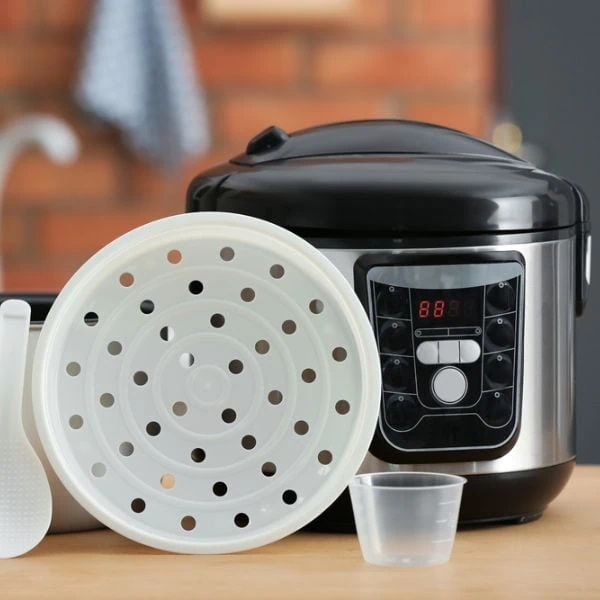
Picking out a rice cooker is really just a matter of breaking it down into the basics. Here are some things to consider that will help to make your choice a bit easier:
- Ease of maintenance – Ideally, everything should be detachable and separate easily for quick cleanup. If it takes forever to clean, you won’t want to use it, so look up the cleanup steps on your phone in advance or repent that you didn’t at your leisure!
- Durability – It’s worth it to go with a name that you trust, even if you’re getting the simplest of models. They will last longer and if something goes awry, then you won’t be limited to emailing someone on the other side of the planet.
- Capacity and kitchen space – How much rice do you need and how much space do you have for the cooker? If it’s just you and space is limited, there are models out there that will cook a single cup of rice to perfection. We should not, bigger models DO have a minimum load, so think about how much rice you’ll be making beforehand, and don’t forget your kitchen space for hosting it.
- Applications – Multifunction and digital models give you more control and you can make a wider range of recipes with the same appliance. Go for a model that lets you do this – you’ll love your rice cooker for it and you’ll be pleasantly surprised how often you’ll actually use it.
- Design and aesthetics – Go with designs that incorporate extras, such as added steamer inner-pots and other perks that only come with a specific design. After that, aesthetics are certainly important, so if you find a model with the functions you need that costs a little more but looks great, then get it – we won’t tell!
FAQ
Before we wrap things up, we’ll answer some of the most frequently asked questions about how rice cookers work and their applications. This will help to fill in any gaps that we might have missed and hopefully also pique your interest in these nifty little kitchen wonders.
Are rice cookers worth it?
Rice cookers are worth every penny that you spend. While they take the same amount of cooking time (or even longer) to cook your rice, the ability to simply ‘load it and leave it alone’ is worth the cost of admission alone.
When you start playing with it and figure out how to make pizza rolls, perfect risotto, and flavorful oatmeals with little to no effort then you’ll just end up loving your rice cooker more. They’re definitely worth it – so don’t think it’s just a low-maintenance way to cook rice. Like everything in your kitchen, a little creative thinking goes a long way.
Can I open my rice cooker while cooking?
Unless you are experimenting with something that wouldn’t normally go in your rice cooker, then you should refrain from peeking and trust it to do its job.
That’s because your rice cooker is doing the brunt of the work with steam and every time that you open it, you’ll be letting some out, and depending on your cooker, that could lead to scorched rice or a score of frenzied fuzzy logic calculations in an effort to compensate for your meddling.
Trust the cooker and let it do its work – you’ll be happy that you did!
Can you cook just about anything with a rice cooker?
Yes, actually, although this will be easier if you spend a little extra on a rice cooker with expanded functions. Multifunctional models and digital are great for this and aside from some of the foods we’ve already mentioned, you can do things like load up your Rice cooker with meats and make even rough cuts come out tender and flavorful.
It just takes a little experimentation and internet research, but rice cookers can definitely do more than simply make you a batch of perfect rice.
Can you put liquids other than water in a rice cooker?
You can and you SHOULD try different liquids in your rice cooker.
You can go simple, by substituting broth for water as you would in a pot, or mix in some water and cream of mushroom or tomato soup – you get the idea. Get creative and see what happens. If you know your flavors then 9 times out of 10 your trusty rice cooker will not disappoint you.
Does a rice cooker cook the same way as a crock pot?
No, a rice cooker and a slow cooker (crock pots) work differently when cooking your food. The idea behind a crockpot is a slow cook that perfectly distributes the heat, while your basic rice cooker works on a ‘bring it to a boil and then reduce heat for steaming’ principle.
Some of the fancier rice cooker models will differ but these are the principal differences in how these cookers work their magic.
Video Goodness
Now that you’ve got the hard facts, to drive the lesson home we’ve found a video by Vincent Stevens that explains how heat is regulated to ensure that the ‘boil and reduce’ model is performed in a basic rice cooker. Give it a peek if you have a moment as it’s a nice little info nugget to enjoy as we wrap things up.
Rice cooker guide wrap-up
In this article, we’ve talked about how rice cookers work, as well as what they are capable of if you want to go beyond their basic parameters for a little bit of culinary adventure. At their most basic, these cookers bring water quickly to a boil, reducing heat so that steam can do the rest, but more advanced models can do even more.
Using fuzzy logic, which drives things like Artificial Intelligence, subway controls, aviation applications, and more, smart rice cookers can even micromanage every aspect of the cooking process – from the water volume, temperature, and even type of rice until it’s fully cooked and done.
While they seem to be a one-trick pony at first glance, rice cookers can be used for many different kinds of meals, so don’t be afraid to invest in a nice one to add to your current kitchen arsenal. Once you’ve seen how easy they make it to create some truly fantastic meals, we guarantee that you’re gonna love your rice cooker!





David learned to cook at an early age after his mother told him that he couldn't live on pizza forever, Dave uses his modest kitchen skills to recreate sorely-missed recipes from home and to occasionally make new favorite ones from places he is visiting.